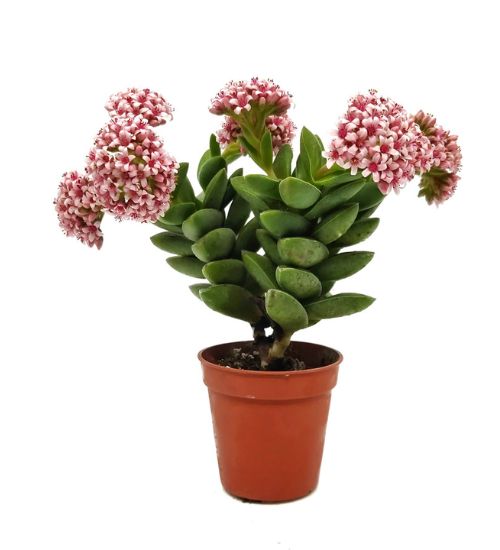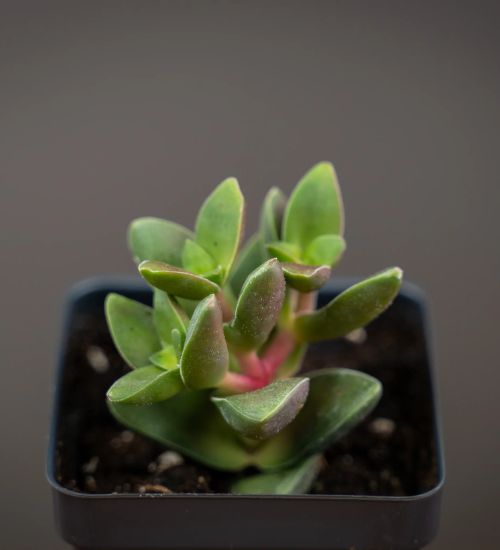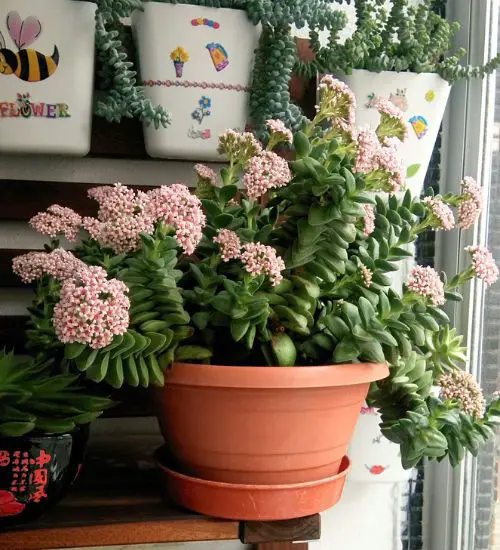Sun: Full sun to partial sun
Water: Typical water needs for a succulent
Temperature: Zone 10a from 30° F to 35° F (-1.1 ° C to 1.7° C)
Winter Survival: Not cold hardy
Propagation: offsets
Flower: In the Spring
Flower Type:
Toxic: Generally non-toxic to humans but can be toxic to animals.
Dormant: summer
Space Requirement: Indoors & Outdoors
Common Problems: No major pests, pests
Where to buy Crassula ‘Springtime’?
Basc Care for Crassula ‘Springtime’
Watering
Can you water your succulent more than what its need? The answer is yes and no. In extreme conditions, you can water your plants more often when you notice the soil is completely dry.
One simple tip for you is that you can use some online apps to check the soil status before you go water your succulents. I would recommend the ThePlantsCheck app, it has some nice features there.
Fertilizing
Only feed this succulent during its active growing seasons which means winter. Use the right fertilizer applied in the right amounts. Applying half-strength balanced fertilizer every month or so is recommended for optimal results.
Do not fertilize during summer as the plant is dormant.
Sun & Location Requirements for "Crassula ‘Springtime’"
Crassula ‘Springtime’ requires full sun to partial sun in order to grow its best. If your plant isn't getting at least 6 hours of direct sunlight each day, consider moving it outdoors during the summer months or near a south-facing window throughout the year. With enough light, you'll have a healthy and happy succulent!
In order to ensure that Crassula ‘Springtime’ survives the winter, insulation and drainage are essential. A layer of mulch or gravel around the plant can help keep the roots warm during cold temperatures. Furthermore, avoiding exposure to wind and sun can reduce the risk of frost damage and promote longevity for your succulent.
Crassula ‘Springtime’ also benefits from some indirect light throughout the day as well, so make sure you give it enough space to soak up light without becoming too exposed to heat.
Propagation
Propagating with offsets is a great way to get more plants from the same mother plant. All you have to do is cut away an offset and pot it in soil, and soon enough you’ll have a brand-new Crassula ‘Springtime’!
Toxicity

Although Crassula ‘Springtime’ is generally not toxic to humans, the saponins found in its leaves can be dangerous for animals if ingested. For this reason, it’s best to keep pets away from these plants and make sure they are out of reach.
Pests and Diseases
Crassula ‘Springtime’ is not affected too much by common pests and diseases like most of the other succulents.
It may get attacked by %pest_names%. To prevent this from happening, keep your succulent in a well-ventilated area and check it regularly for any signs of pests or health problems. If you do spot any, treat the plant using below methods.
%pest_treatment_methods%
Crassula ‘Springtime’ can be affected common pests and diseases like most of the other succulents such as %pest_names%.
If you do spot any of pest signs, you can treat your succulent using below methods. %pest_treatment_methods%
Besides that, to prevent serious health issues from happening, keep your succulent in a well-ventilated area and check it regularly for any signs of pests or health problems.


